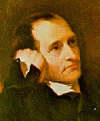
On 3 Dec 1753, Samuel Crompton was born, a British inventor of the “spinning mule” to produce continuous, strong, fine yarn. A short article on Samuel Crompton will remind you of his important advance in technology, which came many troubles, and he died in poverty, even though he helped launch the Industrial Revolution
Today, two more short articles are of interest. One from archaeological history is on George Smith's Account of the Deluge from Assyrian Tablets. On 3 Dec 1872, at the the Society of Biblical Archaeology in London, he read his translation from the cuniform tablets. Its resemblance to the biblical account of the Flood in Genesis, though older than the Bible, caused a sensation. He had pieced together fragments of tablets at the British Museum brought from Ninevah (Kuyunjik) while pursuing an interest in cuneiform inscriptions. This is now known as the eleventh tablet of the Gilgamesh epic.
And on 3 Dec 1732, James Blair was rescued from a fire in a coal mine. William Tossach, a Scottish surgeon, resusitated him with mouth to mouth breathing, bringing the casualty back to life after being “in all appearance dead.” You can read Tossach's description of the Rescue Breathing. He checked the circulation of blood by opening a vein in the miner's arm.

On 3 Dec 1993, Lewis Thomas died, an American physician, researcher and author of reflective essays on a wide range of topics in biology topics. Today's book pick is: Lives of a Cell: Notes of a Biology Watcher, by Lewis Thomas. In this National Book Award Winning collection, ehich is elegant, suggestive, and clarifying, Thomas explores the world around us. He examines the complex interdependence of all things—going beyond the usual limitations of biological science and into a vast and wondrous world of hidden relationships. In these personal, poetic essays his topics range among computers, germs, language, music, death, insects, and medicine. The truly extraordinary facts about biology and microbiology give a fast education about cellular biology that is both a truly fascinating read and furthermore, able to leave the reader in actual awe.
It is available from Amazon, typically about New from $6.93. Used from $1.95. (As of earlier time of writing - subject to change.)
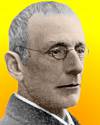 | The surveyor ought to work in solitude. He must no more admit company while mapping than a writer admits visitors to his study while writing. This applies even to geological company, nay, even to the company of a skilled fellow-surveyor... The two authors of this book [Edward Greenly and Howell Williams] once thought that it would be pleasant to have a day's mapping together, and decided to break through their rule. The result was a ludicrous paralysis. The commonest operation seemed a mountain of difficulty. Next day the senior author (whose ground it was) swept an india-rubber over every line and went out again, when, hey presto! And all was clear. |
 | Chemical waste products are the droppings of science. |
 | A man has a very insecure tenure of a property which another can carry away with his eyes. A few months reduced me to the cruel necessity either of destroying my machine, or of giving it to the public. To destroy it, I could not think of; to give up that for which I had laboured so long, was cruel. I had no patent, nor the means of purchasing one. In preference to destroying, I gave it to the public. [On his inability to keep for himself a profitable income from his invention of the Spinning Mule.] |
| Before you look at today's web page, see if you can answer some of these questions about the events that happened on this day. Some of the names are very familiar. Others will likely stump you. Tickle your curiosity with these questions, then check your answers on today's web page. | |
| Births | |
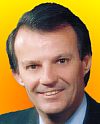 | Peter C. Schultz, born 3 Dec 1942 was an American ceramicist who, working with Corning Glass researchers Robert Maurer and Donald Keck, made a product (1970) capable of replacing and improving on copper in a specific now well-known application. What was this revolutionary product? |
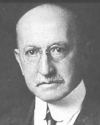 | Carl Koller, born 3 Dec 1857, was a Czech-born American ophthalmic surgeon who introduced a new surface anesthetic in eye surgery (1884) and inaugurated the modern era of local anesthesia. What was the anesthetic Koller introduced for eye surgery? |
| Deaths | |
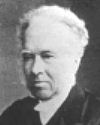 | James Challis (1803-1882) was a British clergyman and astronomer, famous in the history of astronomy for a failure. What was this failure? |
| Events | |
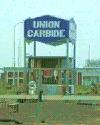 | On 3 Dec 1984, shortly after midnight, inhabitants of Bhopal, India, suffered the world's worst industrial disaster. Over 40 tonnes of highly poisonous methyl isocyanate gas leaked out of the Union Carbide factory. Poisonous gases enveloped an area of 40 sq.kms. Thousands of people died. Over 500,000 suffered from acute breathlessness, pain in the eyes and vomiting as they ran in panic to get away from the poison clouds that hung close to the ground for more than four hours. For use in what final product was the methyl isocyanate gas being manufactured? |
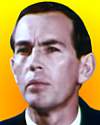 | On 3 Dec 1967, in Cape Town, South Africa, a team of surgeons performed the first human heart transplant. A South African businessman received the healthy heart of a woman who had died in a car crash. The patient survived 18 days before succumbing to double pneumonia, contracted after destruction of his body's immunity mechanism by drugs administered to suppress rejection of the new heart as a foreign protein. Who was the surgeon who led his team in this first heart transplant? |
Fast answers for the previous newsletter for December 2: raw liver • Gerardus Mercator • nuclear chain reaction • Mount Palomar Observatory • China.
 If you enjoy this newsletter, the website, or wish to offer encouragement or ideas, please send feedback by using your mail reader Reply button.
If you enjoy this newsletter, the website, or wish to offer encouragement or ideas, please send feedback by using your mail reader Reply button. Your click on a Facebook, StumbleUpon, or other social button on the site webpages is also a welcome sign of appreciation. Thank you for using them.
© This newsletter is copyright 2019 by todayinsci.com. Please respect the Webmaster's wishes and do not put copies online of the Newsletter — or any Today in Science History webpage. (If you already have done so, please remove them. Thank you.) Offline use in education is encouraged such as a printout on a bulletin board, or projected for classroom viewing. Online, descriptive links to our pages are welcomed, as these will provide a reader with the most recent revisions, additions and/or corrections of a webpage. For any other copyright questions, please contact the Webmaster by using your mail reader Reply button.
--
If you do not want to receive any more newsletters, Unsubscribe
To update your preferences and to unsubscribe visit this link
Executive Real Estate Business Class
-
"It was like a man with wings. It wasn't like anything you'd see on TV or in a monster movie." ...
About the publisher
Search This Blog
Blog Archive
-
▼
2020
(1542)
-
▼
December
(121)
- On This Day for December 31 - Ottawa made capital ...
- Newsletter for Thursday 31 December.
- December 31: The Battle of Quebec, a Rainy Day in ...
- All That's Interesting's 10 Most Popular Stories O...
- On This Day for December 30 - Union of Soviet Soci...
- Newsletter for Wednesday 30 December.
- December 30: Creation of the USSR, the All India M...
- Know Better in 2021
- On This Day for December 29 - U.S. annexation of T...
- Newsletter for Tuesday 29 December.
- December 29: On This Day in History
- The Best of HISTORY This Week
- The 10 Best History Uncovered Articles Of 2020
- On This Day for December 28 - Westminster Abbey op...
- Newsletter for Monday 28 December.
- December 28: Galileo Observes Neptune, Harriet Tub...
- The death of Thomas Becket | The history of New Year
- On This Day for December 27 - Dutch transfer of In...
- Newsletter for Sunday 27 December.
- December 27: On This Day in History
- On This Day for December 26 - Indian Ocean tsunami...
- Newsletter for Saturday 26 December.
- December 26: 1st Spanish Settlement in the New Wor...
- The Anti-Santa Who Takes Naughty Kids To Hell, The...
- On This Day for December 25 - Christmas celebrated...
- Newsletter for Friday 25 December.
- December 25: Andrew Johnson's Christmas Pardon, Ce...
- On This Day for December 24 - Treaty of Ghent, Joh...
- Newsletter for Thursday 24 December.
- December 24: The Treaty of Ghent, Author Stephenie...
- Demystified Video: Why Is Christmas in December?
- On This Day for December 23 - Aleksander Kwaśniews...
- December 23: Van Gogh's Madness, the Partition of ...
- On This Day for December 22 - Alfred Dreyfus sente...
- Newsletter for Tuesday 22 December.
- December 22: An Impenetrable Fortress Falls, the 1...
- On This Day for December 21 - Radium discovered by...
- December 21: The Soviet Union Ends, Life in the Tr...
- A history of Christmas – from Oliver Cromwell to V...
- On This Day for December 20 - Macau made an admini...
- Newsletter for Sunday 20 December.
- December 20: US Buys Louisiana, the Viet Cong and ...
- On This Day for December 19 - Articles of impeachm...
- Newsletter for Saturday 19 December.
- December 19: On This Day in History
- The Soviet Executioner Who Killed 7,000 Poles One ...
- On This Day for December 18 - Slavery abolished in...
- Newsletter for Friday 18 December.
- December 18: The Yuan Dynasty Begins, Nuclear Powe...
- The perfect gifts for the curious kids in your lives!
- On This Day for December 17 - Flight of the Wright...
- Newsletter for Thursday 17 December.
- December 17: Tamerlane Sacks Delhi, the Wright Bro...
- Demystified: Do We Really Use Only 10 Percent of O...
- On This Day for December 16 - Boston Tea Party, Ja...
- Newsletter for Wednesday 16 December.
- December 16: A Boston Tea Party, the Battle of the...
- Haunting Kennedy Assassination Photos That Most Pe...
- On This Day for December 15 - Premiere of Gone wit...
- Newsletter for Tuesday 15 December.
- December 15: Vandals, Mongols and the US Bill of R...
- On This Day for December 14 - Roald Amundsen's arr...
- Newsletter for Monday 14 December.
- December 14: Amundsen and Scott's Epic Race to the...
- On This Day for December 13 - New Zealand sighted,...
- Newsletter for Sunday 13 December.
- On This Day for December 12 - U.S. Supreme Court d...
- December 12: A Generous Manhattan Gift, Bush v. Go...
- How eels powered the medieval economy | The histor...
- 55 Of History's Creepiest Pictures And Their Distu...
- On This Day for December 11 - Abdication of King E...
- Newsletter for Friday 11 December.
- December 11: The Mayflower Pilgrims, an Abdication...
- UPDATED: Britannica Year in Review: Story of the Year
- Britannica Year in Review: Story of the Year
- On This Day for December 10 - Encyclopædia Britann...
- Newsletter for Thursday 10 December.
- December 10: Spanish-American War, Edward VIII and...
- Laurence Fishburne Hosts a New HISTORY Digital Series
- Demystified: What's the Difference Between Whiskey...
- On This Day for December 9 - Lech Wałęsa elected p...
- Newsletter for Wednesday 9 December.
- December 9: Belisarius Enters Rome, Lech Wałęsa El...
- What will you discover this Thursday?
- On This Day for December 8 - John Lennon fatally s...
- Newsletter for Tuesday 8 December.
- December 8: Lincoln's Amnesty Proclamation, the US...
- On This Day for December 7 - Pearl Harbor attack, ...
- Newsletter for Monday 7 December.
- December 7: Birth of Plastics, Infamy in Pearl Har...
- History books of the year | Historical board games...
- On This Day for December 6 - Irish Free State esta...
- Newsletter for Sunday 6 December.
- December 6: Mongols Destroy Kiev, Slavery Abolishe...
- On This Day for December 5 - Witchcraft condemned ...
- Newsletter for Saturday 5 December.
- December 5: Gold Rush in California, End of Prohib...
- HNN Newsletter: You are now unsubscribed
- 10 Medieval Execution Methods That Are The Definit...
- On This Day for December 4 - Ivan the Terrible pro...
-
▼
December
(121)
-
Blogroll
-
About
HistoryFact










0 comments:
Post a Comment